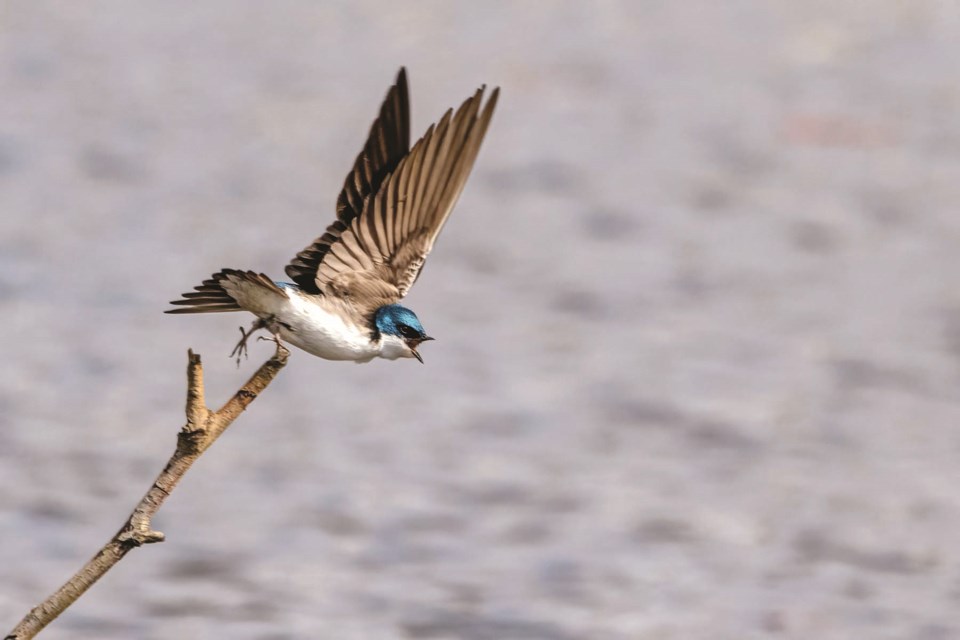Our El Nino winter has passed with temperatures consistently above normal, except for the arctic outbreak for a few days in mid-January, that briefly produced record lows. The freezing weather may have caused some mortality for our Anna’s hummingbirds, and there was a temporary influx of red-breasted sapsuckers to sea-level. Otherwise, there seemed little response from the birds. Sometimes during these arctic outflows there are sudden southward movements of boreal-wintering species such as Bohemian waxwings and common redpolls…but not this time.
Purple finch is a boreal nesting species that normally winters on the Sunshine Coast, often around bird feeders. This year it seemed to be completely absent, until a few were reported in the last week of February. Finches can be unpredictable like this, with their movements determined by the abundance or absence of cone crops of varying tree species.
If the cold snap had few effects, the prevalent warm conditions produced a couple of anomalies. Seven species of swallow have been recorded on the Sunshine Coast (two are rare or sporadic). Normally, swallows are completely absent from late September to early March, so when two different species appeared in the first three days of February it was exceptional. Blythe Wilde noted a tree swallow at the waterfront in Sechelt on the 1st, and on the 3rd Robyn Rietze photographed three barn swallows over the Wilson Creek estuary, with Mari Petznek finding two birds there on the 16th. Most swallows winter from Mexico south, with purple martins flying all the way to South America. The first swallows to return are tree and violet-green swallows, often arriving about March 7, with the Ruby Lake Resort lagoon the first location.
Cedar waxwings are abundant summer residents on the Sunshine Coast and arrive en masse in mid-May. They are normally absent in winter but there have been numerous reports of a small flock in Lower Gibsons, and others in Wilson Creek and Sechelt.
On Feb. 15, the first northern shrike of the winter was located in a clearcut on the trail to Chapman Falls and was present for at least a few days.
Owls are early nesters and during courtship and pair bonding they become quite vocal. Great horned owls are our apex nocturnal predator but despite their size they are hard to find as they are only active in the dark (unless disturbed by crows). They are at their most vocal in February, and there were reports from the Wilson Creek estuary and Kinnickinnick Park. There were also reports of northern pygmy-owl, a tiny sparrow-sized owl that is about in the daytime.
Other signs of spring in late February were the first returning robins, and the unseen “zu-weep” vocalization of Hutton’s vireo.
To report your sightings or questions contact [email protected] or 604-885-5539. Good Birding.




-2.jpg;w=120;h=80;mode=crop)